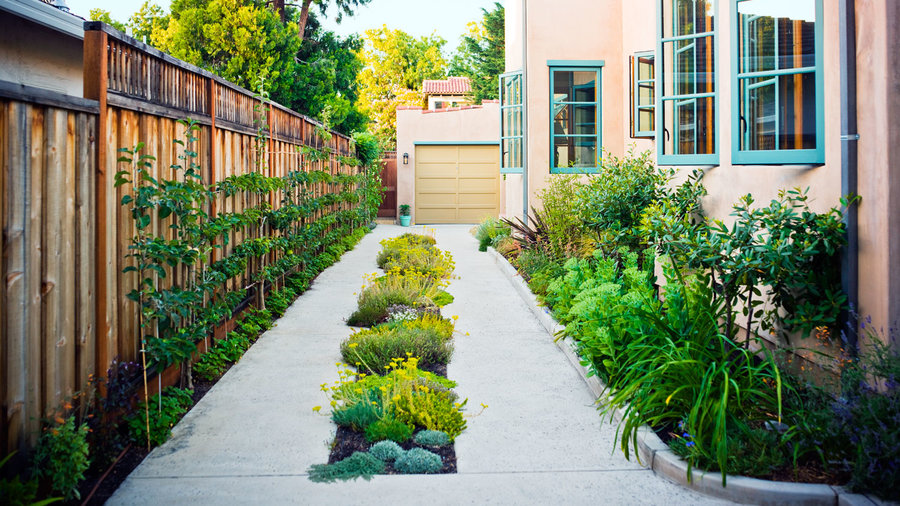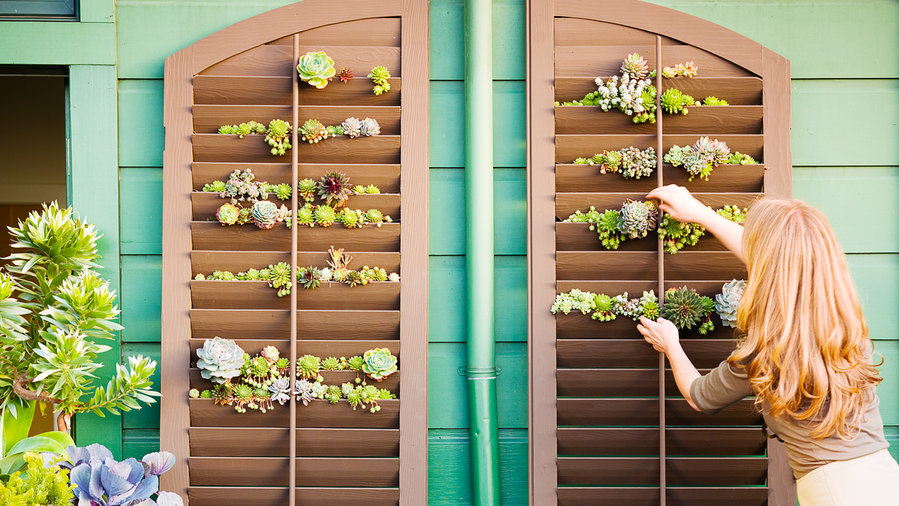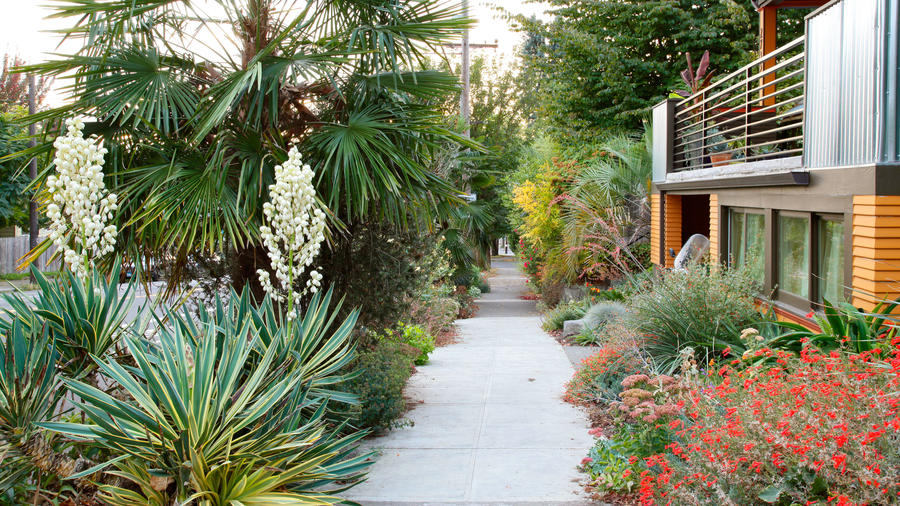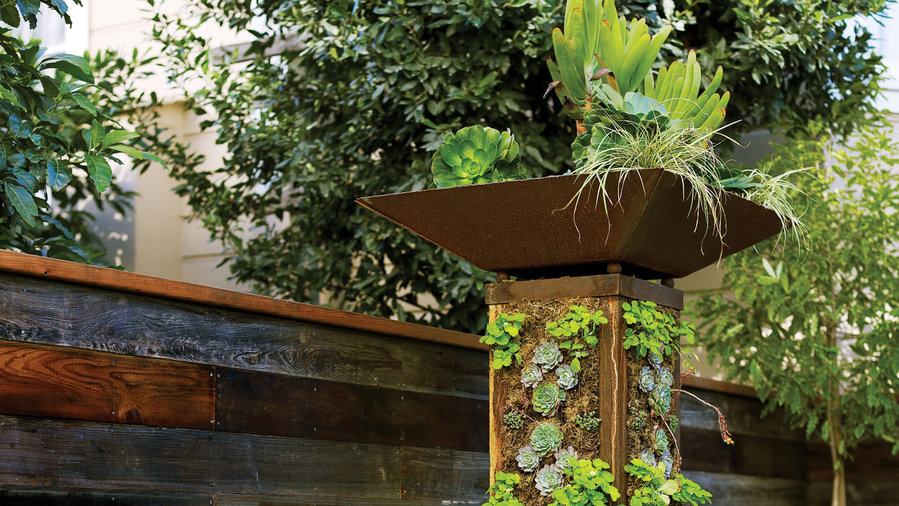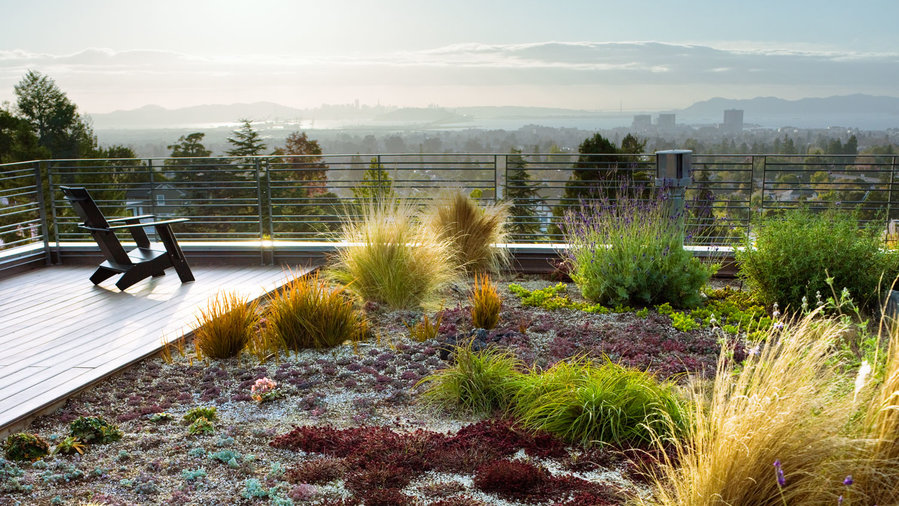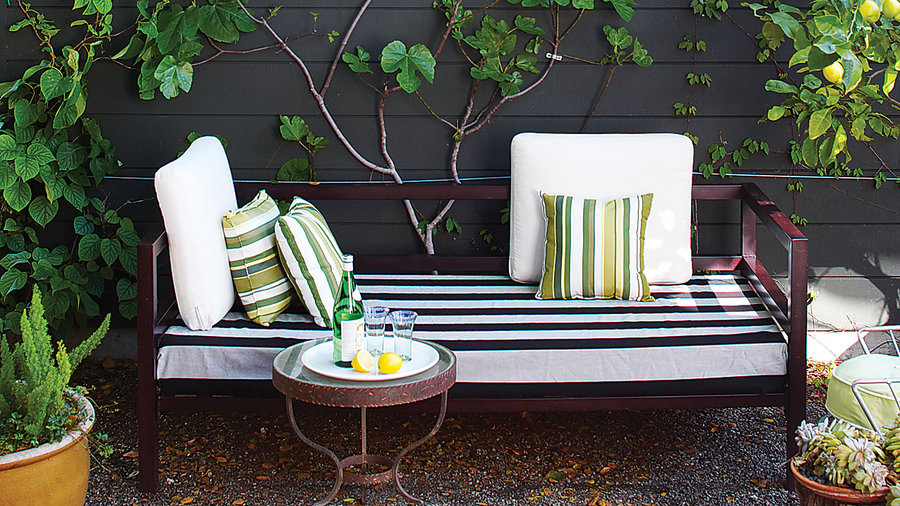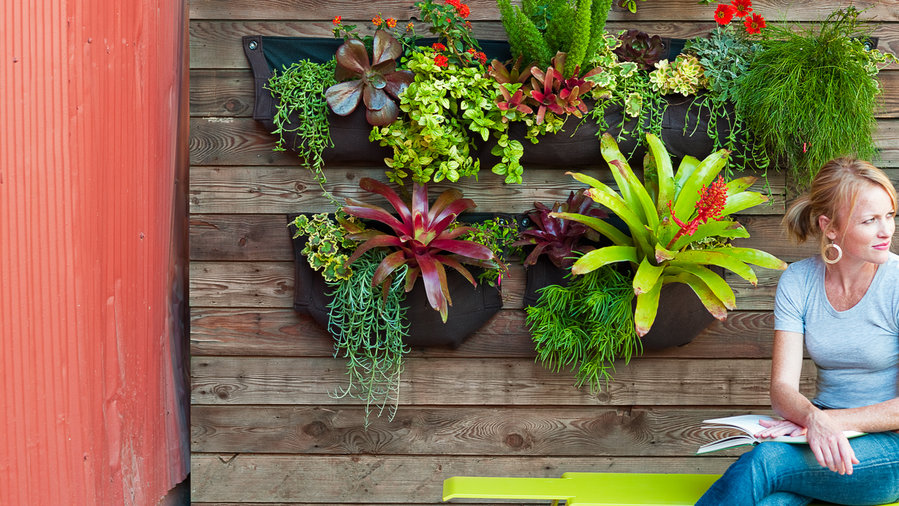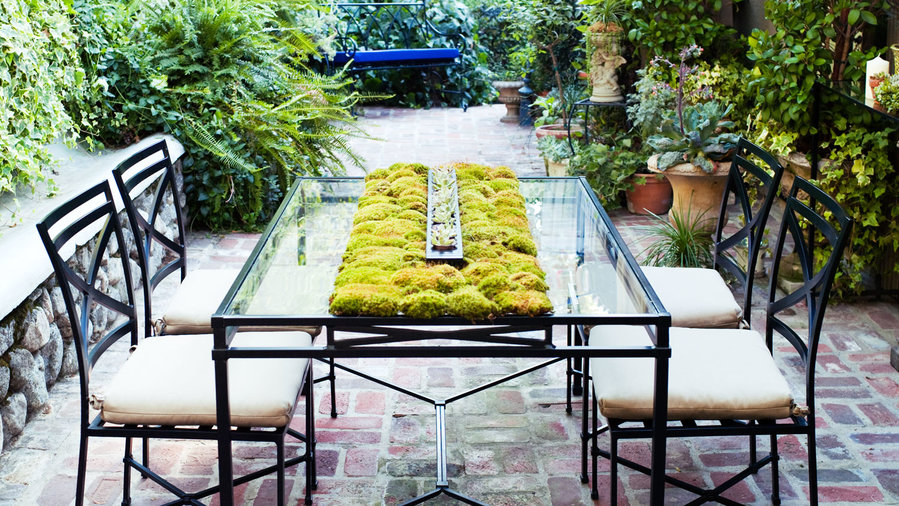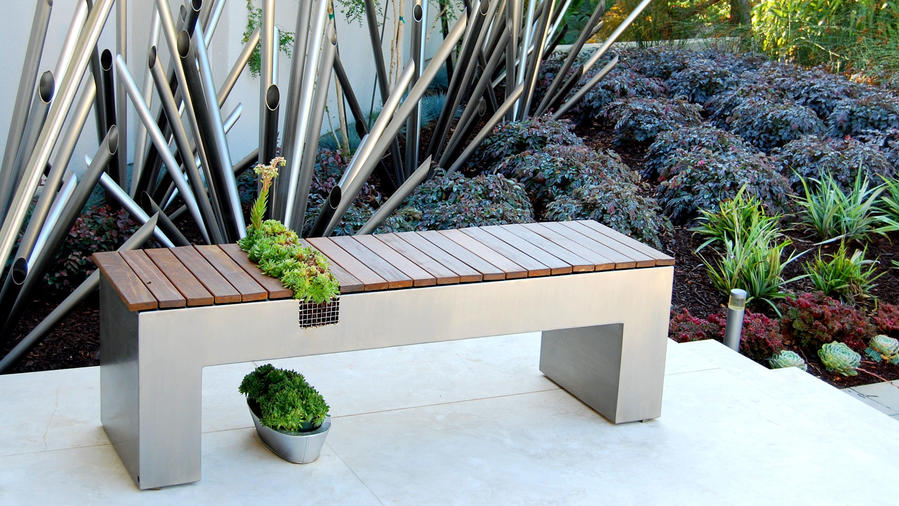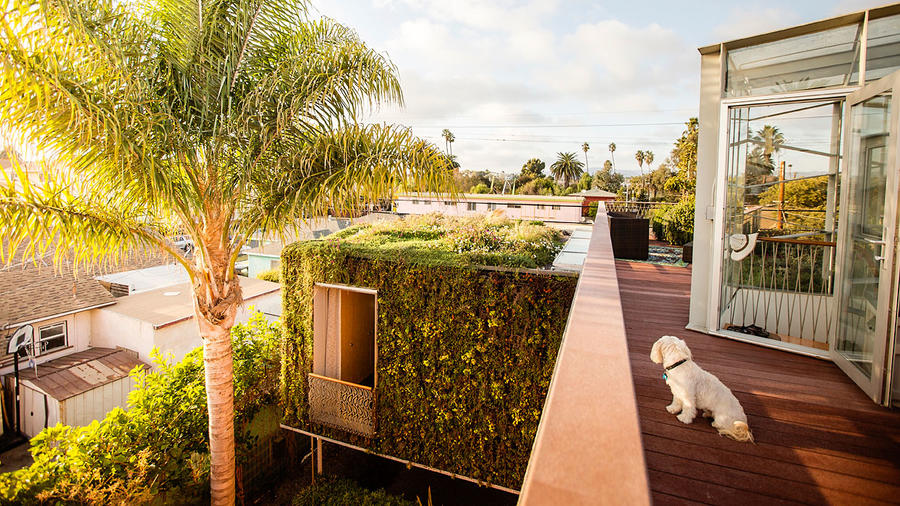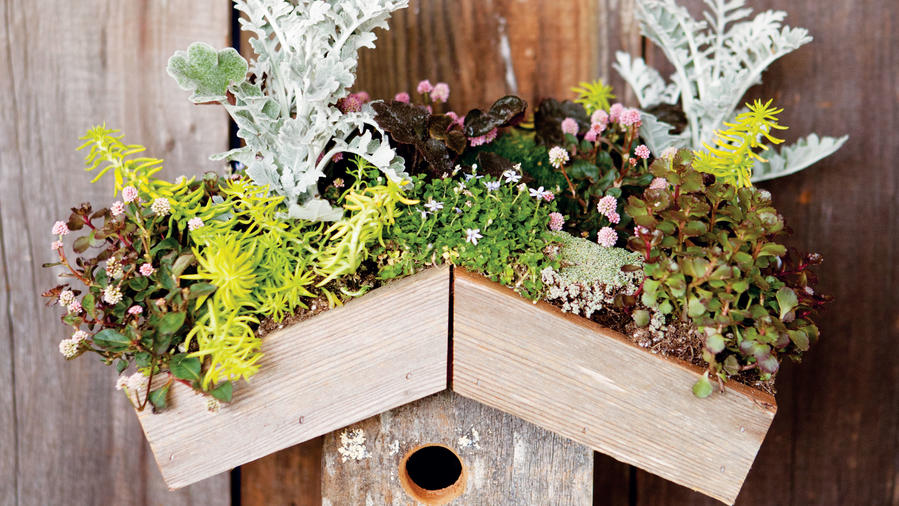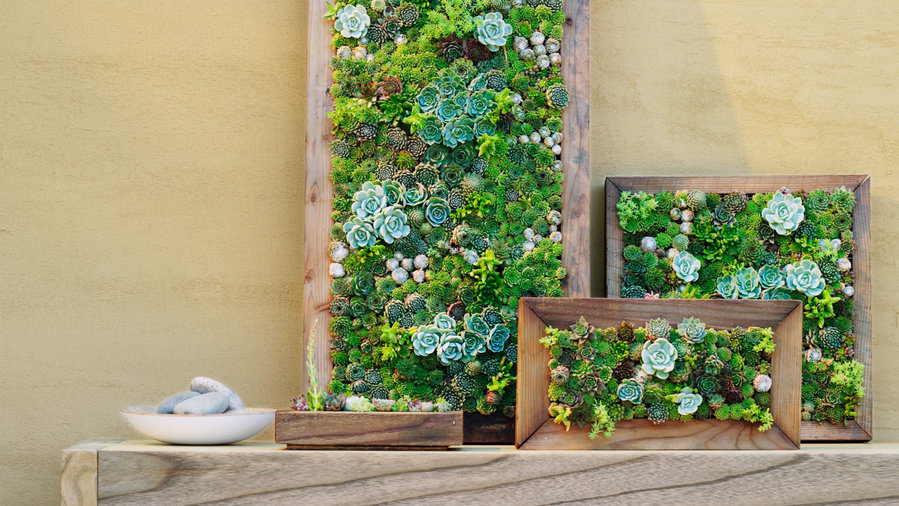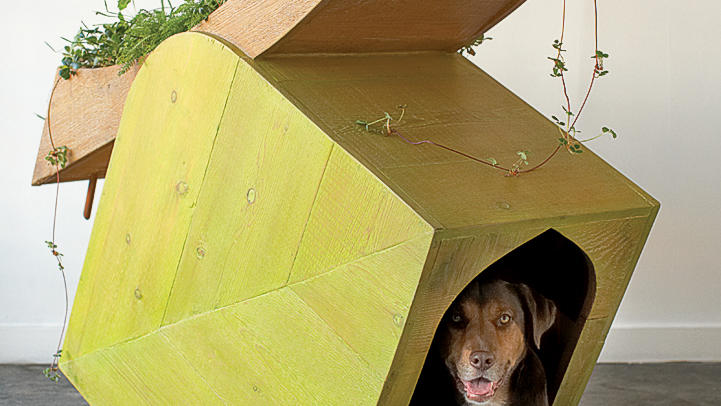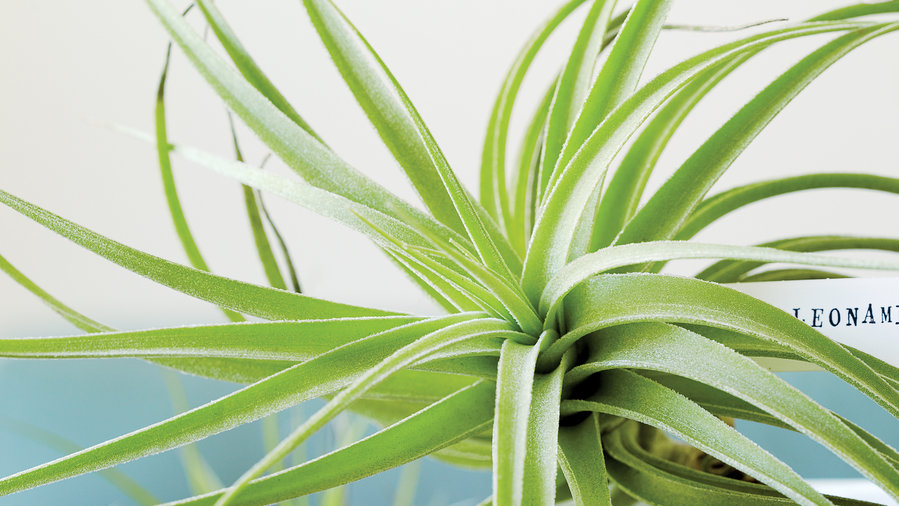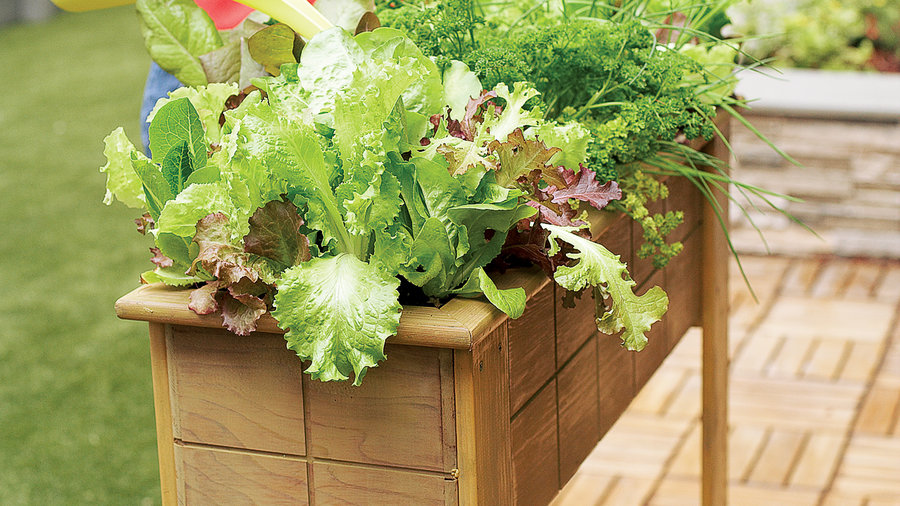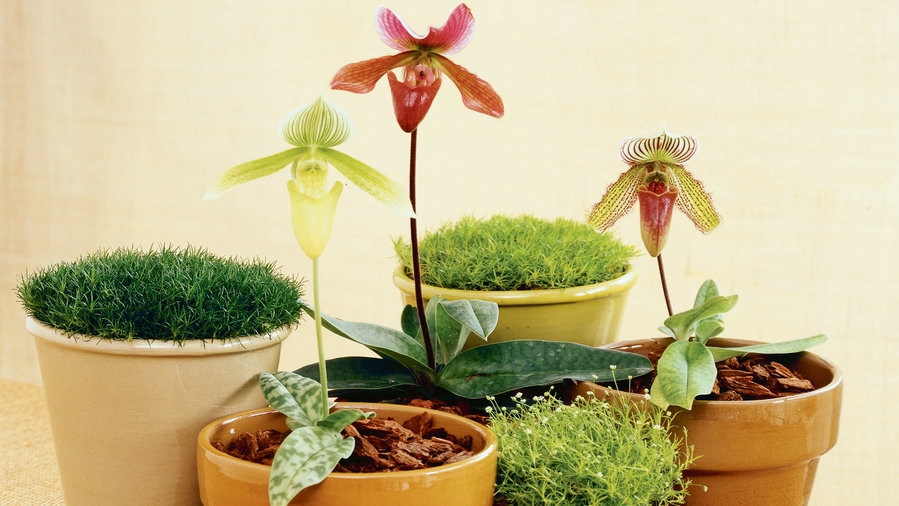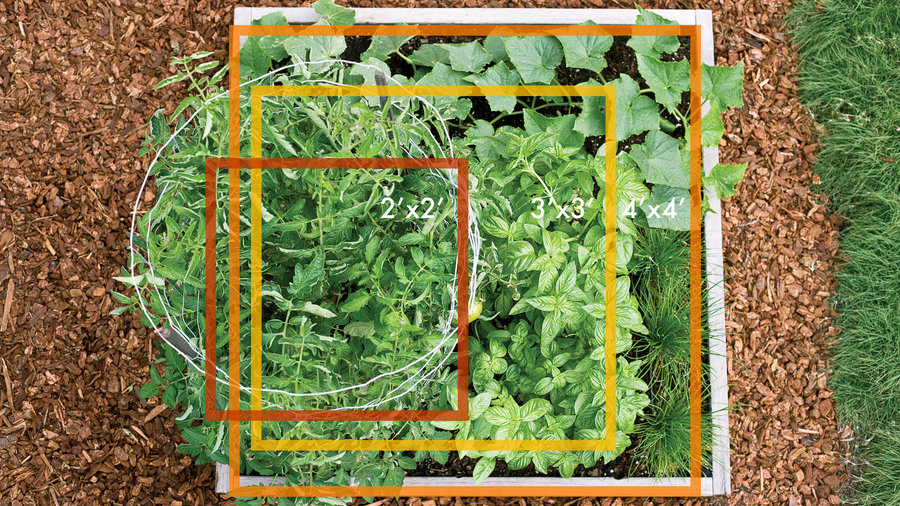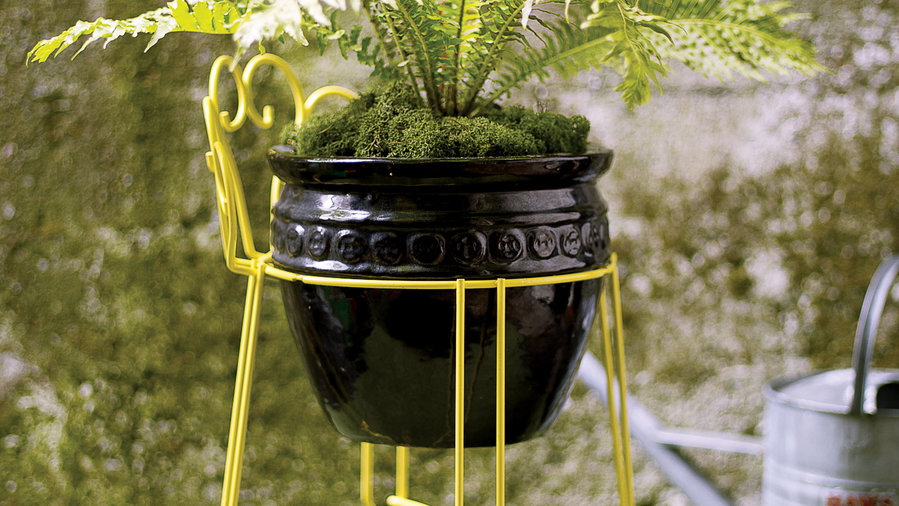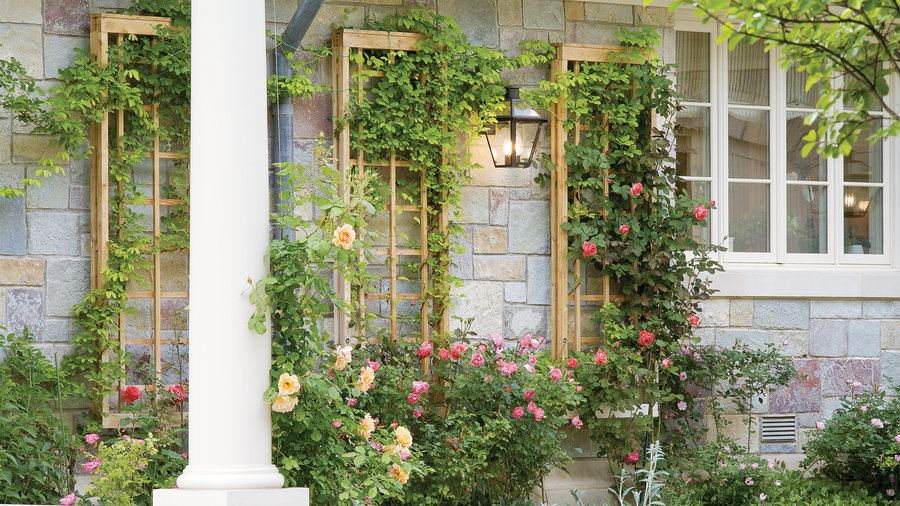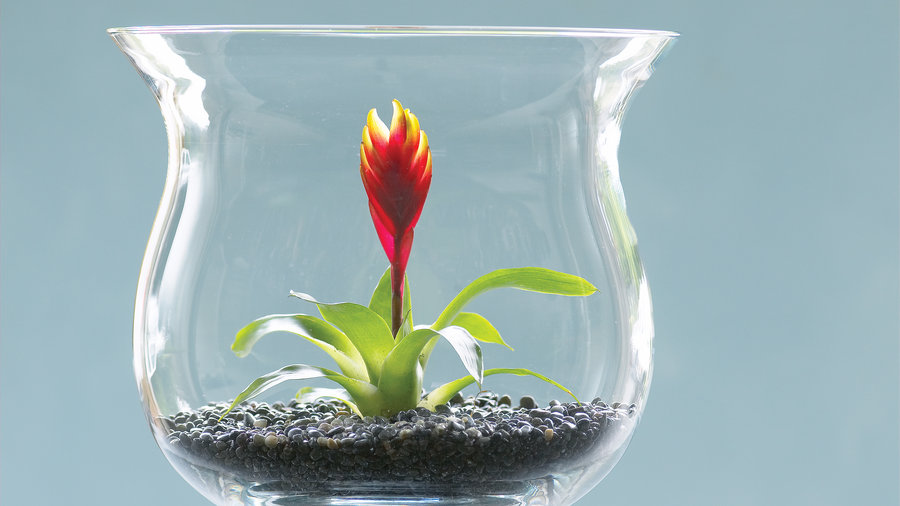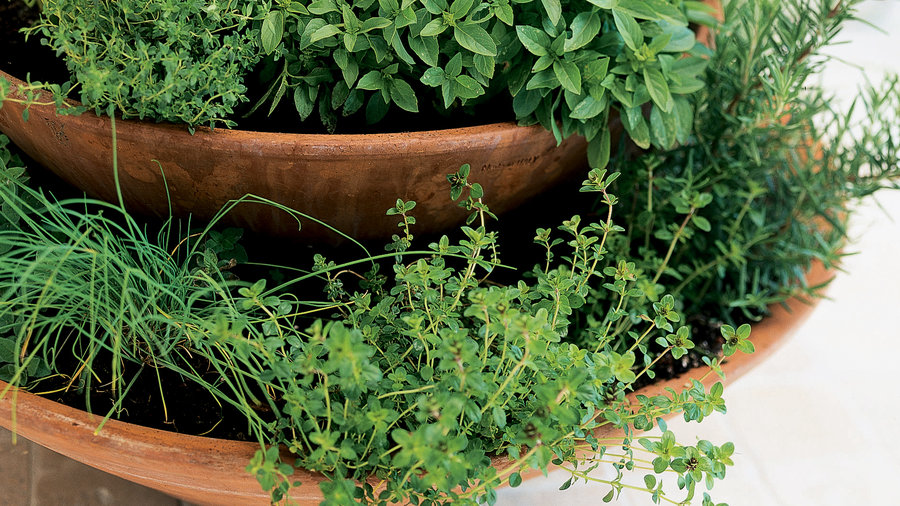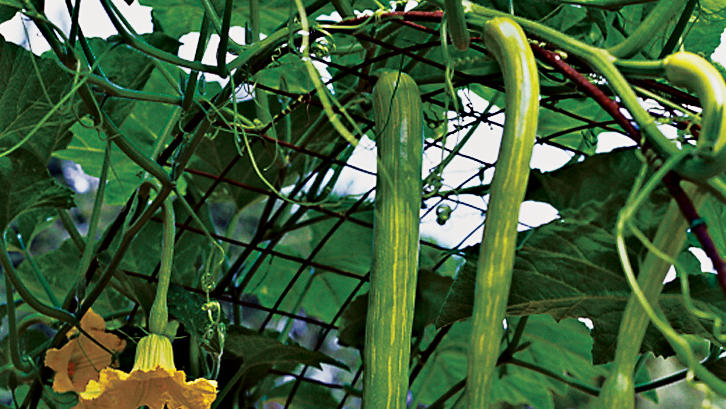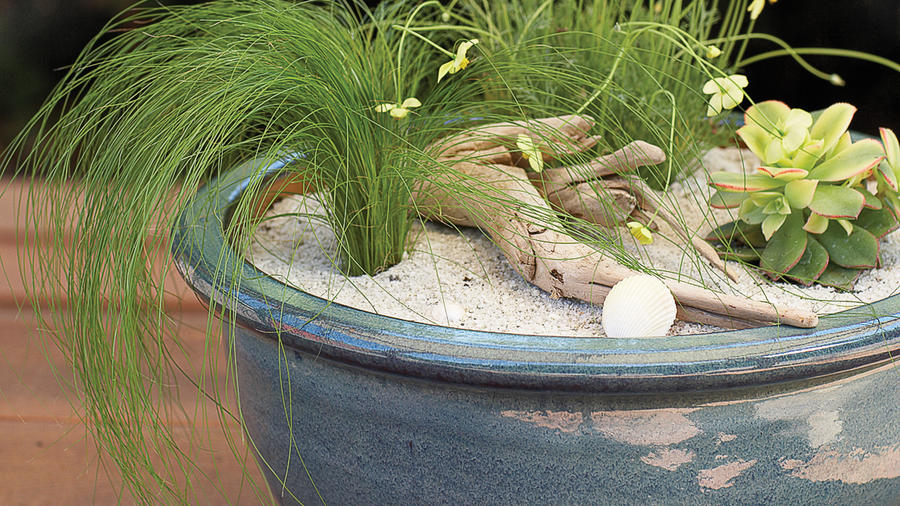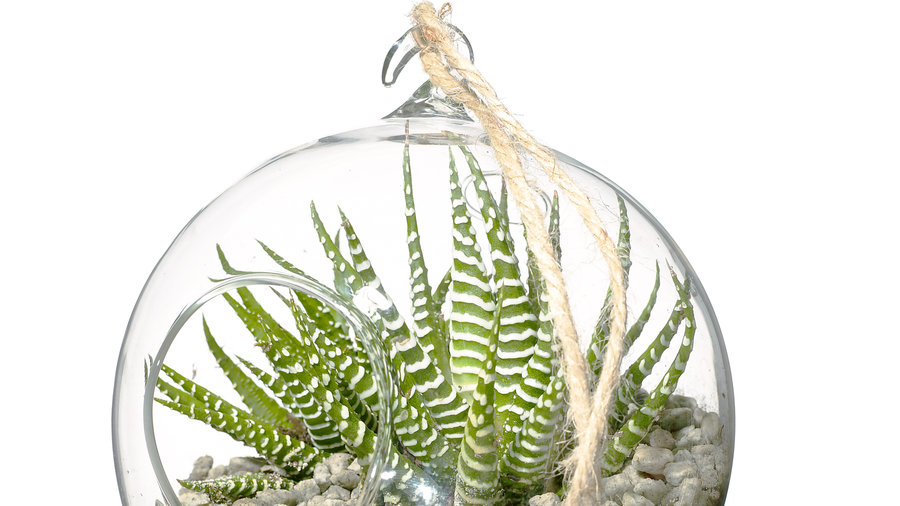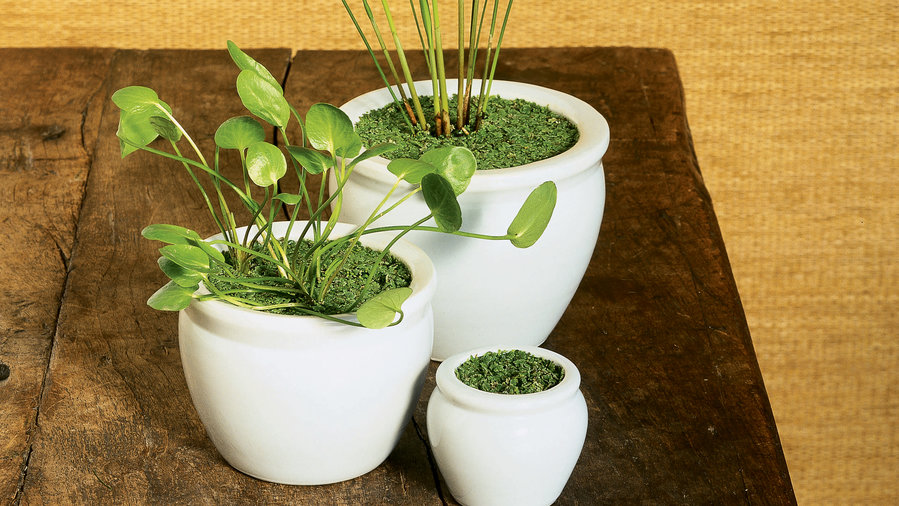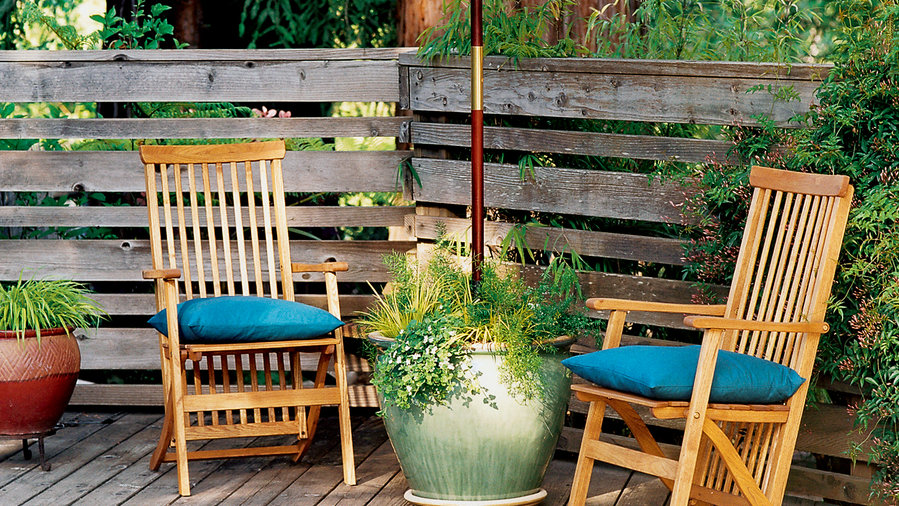Thomas J. Story
Garden in a driveway
Learn more about this driveway makeover
Landscape architect Jeni Webber replaced this Palo Alto home’s solid driveway with two strips of concrete, leaving space for a tiny garden in the middle.
Photo by Thomas J. Story
In salvaged shutters
Twin shutters, each about 8 feet tall, bring a roomlike appeal to designer Baylor Chapman’s (lilabdesign.com) San Francisco deck. Tiny succulent rosettes peek out from openings between the slats.
To hold the rootballs in place, Chapman stapled weed-cloth pockets behind each shutter.
Photo and design: Lauren Springer
In the parking strip
The hellstrip—that patch of ground between the sidewalk and the street—is often a neglected no-man’s-land. However, the right plants can turn an eyesore into a treasured extension of your garden.
More:
Thomas J. Story
On a vertical garden tower
Learn how to plant a vertical garden tower
No room to garden?
A vertical garden tower will give you plenty of space for edibles, and takes up very little room.
Photo by Thomas J. Story
On a city roof
Plants that grow on city rooftops need to be able to stand up to constant sunlight and harsh winds.
Learn more about this hardy rooftop garden
For this project, landscape designer Lauren Schneider mixed California natives that thrive in hot, dry conditions with plants that evolved in similar climates.
Thomas J. Story
Behind a bench
Get more ideas from this amazing cottage makeover
Homeowner and artist Michael Shemchuck created this look on a small patio by growing a young espaliered fig against a dark exterior wall.
The bench is really a metal-framed daybed.
Thomas J. Story
In a Woolly Pocket
Learn how to design a modern hanging plant display
Try a modern take on traditional hanging baskets with a wall of these Woolly Pockets. Since they’re lined with moisture barriers, you don’t have to worry about leaking.
Andrea M. Gómez
On a table
Pasadena landscape architect Heather Lenkin came up with a simple way to make a tabletop garden. Follow her easy how-to for a living centerpiece of your own.
Steven A. Gunther
In a front-yard bench
With a built-in slit for succulents, this garden bench design will turn any neglected nook into a coveted spot for R&R.
Roy Hellwig
On the roof
This garden covers cloaks the walls and rooftop of a master suite addition. Wrapped in waterproof vinyl, the structure is fitted with modular cells that resemble ice cube trays, each containing rooted sedums and meadow plants (lantana, ornamental grasses, and yarrow). An automatic drip system takes care of watering. Design: Marc and Paul Bricault.
Saxon Holt
On a birdfeeder
This simple birdhouse is the perfect place to plant a miniature green roof. Succulents and groundcovers like moss, ivy, thyme, and small sedums will flourish in the shallow depth of the feeder’s roof.
More: 10 adorable birdhouses
Photo by Thomas J. Story
In a frame
Learn how to make your own framed succulent garden
Instead of framing a picture, why not a whole garden? Here, cuttings of assorted succulents knit together to create colorful, textural living tapestries.
Sheila Schmitz
Atop a doghouse
Even Fido deserves a living roof. Designed by Stephanie Rubin, this doghouse is built of fragrant, Forest Stewardship Council–certified red cedar, assembled using nontoxic glue, and painted with pup-friendly pigments. The roof is waterproofed with beeswax and planted with native perennials.
Thomas J. Story
In the air
Looking for the ultimate low-maintenance houseplant?
Tillandsias, also known as air plants, are native to tropical parts of the Americas, where they live without soil on trees and rocks.
E. Spencer Toy
On the patio
Having fresh greens at your fingertips is one of the best parts of the growing season. And with a raised planter on the back patio, you can have a continual supply of salad greens nearly year-round.
You can make one using a ready-made redwood window box from the nursery.
Thomas J. Story
In a tray
Irish moss and Scotch moss combine with lady’s slipper orchids (Paphiopedilum) to form the illusion of a garden.
A copper tray catches drips from terra-cotta pots with soft earth-tone glazes.
Copper tray: 14 inches square; $26 from Smith & Hawken (800/981-9888). Terra-cotta pots: $16 – $50 from Bluestone Main (707/765-2024).
Norman A. Plate
In a tiny spot
If you don’t have a lot of square footage for your garden, experiment with plants that don’t take up a lot of space.
Colonnade apple trees grow upright and extremely narrow.
Ebbe Roe Yovino-Smith
In 4 square feet
You can grow a lot in 4 square feet.
This little patch of soil has been planted with tomatoes, basil, chives, and cucumbers.
Thomas J. Story
In a chair
This plant stand was once a chair.
The project is easy to complete: Simply remove the seat, find a pot that fits, and paint the frame a bright, fun color.
Up a wall
Get step-by-step instructions to build this trellis
A trellis can make even the plainest space look beautiful. Build a number of these trellis panels and attach them to the side of your home for the most elegant effect.
Thomas J. Story
In glass
Learn how to garden in a glass
Plant a tiny cactus or bromeliad in a glass vase and you have an instant sculpture. The only additional materials you need are some polished stones and a small container.
Thomas J. Story
In stacked pots
This two-tiered container garden holds a selection of basic herbs. Trailers and fillers ― chives, rosemary, and thyme―tumble over the edges of the bottom pot (about 24 inches wide).
Dwarf purple and sweet basils grow in the top pot (about 16 inches wide) with thyme filling in around the edges. To keep potted herbs healthy fertilize and water them regularly.
Rob D. Brodman
Up an arbor
Here’s an inventive way to grow squashes and melons in a small space. Growing these vining edibles on an arbor instead of along the ground saves a lot of space.
Next, see how the melons grow.
Rob D. Brodman
In a mini beach
Get our step-by-step instructions
If you yearn for the beach but live miles inland, you can re-create the look easily in a pot.
You’ll need a low, wide pot, potting soil, 3 small, slow-growing plants, sand, and a few small beachy items (like driftwood).
Photography by Jeffery Cross
In an ornament
This tiny terrarium would make a great gift. The 5-inch globe contains its own little garden, which your special someone can marvel over (while thinking of you) every day.
Plants are included. $25; www.floragrubbgardens.com
Thomas J. Story
On a coffee table
Learn how to recreate this mini bog
While not your typical houseplants, a trio of potted miniature water plants looks unbelievably lush displayed on a coffee table.
Photo by Thomas J. Story
In an umbrella stand
See how to make this umbrella stand planter
Strong wind is no friend to most patio umbrellas, but it would take a hurricane to budge this setup.
The umbrella rises from a sleeve centered in a flowerpot that’s filled with three layers of material: a bottom layer of lava rock to hold the sleeve in place, a center layer of concrete for extra rigidity, and a top layer of planting mix. When there’s no need for shade, just lift out the umbrella—the plants should mask the sleeve.
